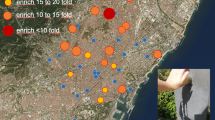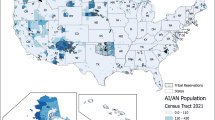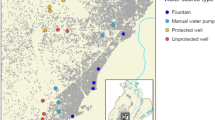Abstract
Potable reuse, the process of treating wastewater to drinkable standards, offers a reliable and sustainable solution to cities and regions facing shortages of clean water. However, implementation is hindered by perceptions of poor water quality and potential health threats. Herein, we compare water samples from potable reuse systems with conventional drinking waters based on the analysis of Chinese hamster ovary cell cytotoxicity contributed by disinfection by-products (DBPs) and sewage-derived anthropogenic contaminants. In all cases, the cytotoxicity of potable reuse waters is lower than that of drinking waters derived from surface waters. The median contribution to total cytotoxicity was 0.2% for regulated DBPs and 16% for the unregulated DBPs of current research interest. Nonvolatile, uncharacterized DBPs and anthropogenic contaminants accounted for 83% of total cytotoxicity. Potable reuse waters treated by reverse osmosis are not more cytotoxic than groundwaters. Even in the absence of reverse osmosis, reuse waters are less cytotoxic than surface drinking waters. Our results suggest that potable reuse can provide a safe, energy-efficient and cost-effective alternative water supply.
This is a preview of subscription content, access via your institution
Access options
Access Nature and 54 other Nature Portfolio journals
Get Nature+, our best-value online-access subscription
$29.99 / 30 days
cancel any time
Subscribe to this journal
Receive 12 digital issues and online access to articles
$119.00 per year
only $9.92 per issue
Buy this article
- Purchase on Springer Link
- Instant access to full article PDF
Prices may be subject to local taxes which are calculated during checkout



Similar content being viewed by others
Data availability
The datasets generated and/or analysed during the current study are available in Supplementary Tables 1–8 for (semi-)volatile DBPs and in Supplementary Data 2 for the cytotoxicity bioassay results. Data associated with Supplementary Tables 1–12 are provided in Supplementary Data 1. Source data are provided with this paper.
References
Gerrity, D., Pecson, B., Trussell, R. S. & Trussell, R. R. Potable reuse treatment trains throughout the world. Aqua 62, 321–338 (2013).
Pecson, B. M., Trussell, R. S., Pisarenko, A. N. & Trussell, R. R. Achieving reliability in potable reuse: the four Rs. J. Am. Water Works Assoc. 107, 48–58 (2015).
Marron, E. L., Mitch, W. A., von Gunten, U. & Sedlak, D. L. A tale of two treatments: the multiple barrier approach to removing chemical contaminants during potable water reuse. Acc. Chem. Res. 52, 615–622 (2019).
Giammar, D. E. et al. Cost and energy metrics for municipal water reuse. ACS EST Engg. 2, 489–507 (2022).
Sim, A. & Mauter, M. S. Cost and energy intensity of US potable water reuse systems. Environ. Sci. Water Res. Technol. 7, 748–761 (2021).
Kim, J., Park, K., Yang, D. R. & Hong, S. A comprehensive review of energy consumption of seawater reverse osmosis desalination plants. Appl. Energy 254, 113652 (2019).
Quon, H. et al. Pipe parity analysis of seawater desalination in the United States: exploring costs, energy, and reliability via case studies and scenarios of emerging technology. ACS EST Engg. 2, 434–445 (2022).
Fielding, K. S., Gardner, J., Leviston, Z. & Price, J. Comparing public perceptions of alternative water sources for potable use: the case of rainwater, stormwater, desalinated water, and recycled water. Water Resour. Manage. 29, 4501–4518 (2015).
Barnes, J. L., Krishen, A. S. & Hu, H. Untapped knowledge about water reuse: the roles of direct and indirect educational messaging. Water Resour. Manage. 35, 2601–2615 (2021).
Escher, B. I. et al. Evaluation of contaminant removal of reverse osmosis and advanced oxidation in full-scale operation by combining passive sampling with chemical analysis and bioanalytical tools. Environ. Sci. Technol. 45, 5387–5394 (2011).
Macova, M. et al. Bioanalytical tools for the evaluation of organic micropollutants during sewage treatment, water recycling and drinking water generation. Water Res. 45, 4238–4247 (2011).
Dong, S. et al. Toxicological comparison of water, wastewaters, and processed wastewaters. Environ. Sci. Technol. 53, 9139–9147 (2019).
Page, M. A. et al. Composite toxicity assays for enhanced assessment of decentralized potable reuse systems. Environ. Sci. Water Res. Technol. 6, 3306–3315 (2020).
Water Reuse: Potential for Expanding the Nation’s Water Supply Through Reuse of Municipal Wastewater (National Research Council, 2012); https://doi.org/10.17226/13303
Leusch, F. D. L. & Snyder, S. A. Bioanalytical tools: half a century of application for potable reuse. Environ. Sci. Water Res. Technol. 1, 606–621 (2015).
Potable Reuse: Guidance for Producing Safe Drinking-Water (WHO, 2017).
Li, X.-F. & Mitch, W. A. Drinking water disinfection byproducts (DBPs) and human health effects: multidisciplinary challenges and opportunities. Environ. Sci. Technol. 52, 1681–1689 (2018).
Agus, E. & Sedlak, D. L. Formation and fate of chlorination by-products in reverse osmosis desalination systems. Water Res. 44, 1616–1626 (2010).
Linge, K. L. et al. Formation of halogenated disinfection by-products during microfiltration and reverse osmosis treatment: implications for water recycling. Sep. Purif. Technol. 104, 221–228 (2013).
Doederer, K., Farré, M. J., Pidou, M., Weinberg, H. S. & Gernjak, W. Rejection of disinfection by-products by RO and NF membranes: influence of solute properties and operational parameters. J. Membr. Sci. 467, 195–205 (2014).
Chuang, Y.-H., Parker, K. M. & Mitch, W. A. Development of predictive models for the degradation of halogenated disinfection byproducts during the UV/H2O2 advanced oxidation process. Environ. Sci. Technol. 50, 11209–11217 (2016).
Zeng, T., Plewa, M. J. & Mitch, W. A. N-Nitrosamines and halogenated disinfection byproducts in US. Full advanced treatment trains for potable reuse. Water Res. 101, 176–186 (2016).
Lau, S. S., Forster, A. L., Richardson, S. D. & Mitch, W. A. Disinfection byproduct recovery during extraction and concentration in preparation for chemical analyses or toxicity assays. Environ. Sci. Technol. 55, 14136–14145 (2021).
Stalter, D. et al. Sample enrichment for bioanalytical assessment of disinfected drinking water: concentrating the polar, the volatiles, and the unknowns. Environ. Sci. Technol. 50, 6495–6505 (2016).
Krasner, S. W. et al. Occurrence of a new generation of disinfection byproducts. Environ. Sci. Technol. 40, 7175–7185 (2006).
Wagner, E. D. & Plewa, M. J. CHO cell cytotoxicity and genotoxicity analyses of disinfection by-products: an updated review. J. Environ. Sci. 58, 64–76 (2017).
Lau, S. S. et al. Assessing additivity of cytotoxicity associated with disinfection byproducts in potable reuse and conventional drinking waters. Environ. Sci. Technol. 54, 5729–5736 (2020).
Chuang, Y.-H., Szczuka, A. & Mitch, W. A. Comparison of toxicity-weighted disinfection byproduct concentrations in potable reuse waters and conventional drinking waters as a new approach to assessing the quality of advanced treatment train waters. Environ. Sci. Technol. 53, 3729–3738 (2019).
Hebert, A. et al. Bioanalytical assessment of adaptive stress responses in drinking water: a predictive tool to differentiate between micropollutants and disinfection by-products. Water Res. 132, 340–349 (2018).
Le Roux, J. et al. Chloramination of wastewater effluent: toxicity and formation of disinfection byproducts. J. Environ. Sci. 58, 135–145 (2017).
Yang, Y. et al. Toxic impact of bromide and iodide on drinking water disinfected with chlorine or chloramines. Environ. Sci. Technol. 48, 12362–12369 (2014).
Dong, S., Lu, J., Plewa, M. J. & Nguyen, T. H. Comparative mammalian cell cytotoxicity of wastewaters for agricultural reuse after ozonation. Environ. Sci. Technol. 50, 11752–11759 (2016).
Dong, S., Masalha, N., Plewa, M. J. & Nguyen, T. H. Toxicity of wastewater with elevated bromide and iodide after chlorination, chloramination, or ozonation disinfection. Environ. Sci. Technol. 51, 9297–9304 (2017).
Liu, C. et al. Toxicity of chlorinated algal-impacted waters: formation of disinfection byproducts vs. reduction of cyanotoxins. Water Res. 184, 116145 (2020).
Allen, J. M. et al. Making swimming pools safer: does copper–silver ionization with chlorine lower the toxicity and disinfection byproduct formation? Environ. Sci. Technol. 55, 2908–2918 (2021).
Allen, J. M. et al. Drivers of disinfection byproduct cytotoxicity in US drinking water: should other DBPs be considered for regulation? Environ. Sci. Technol. 56, 392–402 (2022).
Olivieri, A. W., Pecson, B., Crook, J. & Hultquist, R. California water reuse—past, present and future perspectives. Adv. Chem. Pollut. Environ. Manage. Prot. 5, 65–111 (2020).
Shah, A. D. & Mitch, W. A. Halonitroalkanes, halonitriles, haloamides, and N-nitrosamines: a critical review of nitrogenous disinfection byproduct formation pathways. Environ. Sci. Technol. 46, 119–131 (2012).
Richardson, S. D. & Plewa, M. J. To regulate or not to regulate? What to do with more toxic disinfection by-products? J. Environ. Chem. Eng. 8, 103939 (2020).
Szczuka, A. et al. Regulated and unregulated halogenated disinfection byproduct formation from chlorination of saline groundwater. Water Res. 122, 633–644 (2017).
Furst, K. E., Pecson, B. M., Webber, B. D. & Mitch, W. A. Tradeoffs between pathogen inactivation and disinfection byproduct formation during sequential chlorine and chloramine disinfection for wastewater reuse. Water Res. 143, 579–588 (2018).
Furst, K. E., Coyte, R. M., Wood, M., Vengosh, A. & Mitch, W. A. Disinfection byproducts in Rajasthan, India: are trihalomethanes a sufficient indicator of disinfection byproduct exposure in low-income countries? Environ. Sci. Technol. 53, 12007–12017 (2019).
Wu, Q.-Y. et al. Non-volatile disinfection byproducts are far more toxic to mammalian cells than volatile byproducts. Water Res. 183, 116080 (2020).
Li, Y. et al. Volatile DBPs contributed marginally to the developmental toxicity of drinking water DBP mixtures against Platynereis dumerilii. Chemosphere 252, 126611 (2020).
Dong, S., Massalha, N., Plewa, M. J. & Nguyen, T. H. The impact of disinfection Ct values on cytotoxicity of agricultural wastewaters: ozonation vs. chlorination. Water Res. 144, 482–490 (2018).
Postigo, C. & Richardson, S. D. Transformation of pharmaceuticals during oxidation/disinfection processes in drinking water treatment. J. Hazard. Mater. 279, 461–475 (2014).
Magara, Y., Aizawa, T., Matumoto, N. & Souna, F. Degradation of pesticides by chlorination during water purification. Water Sci. Technol. 30, 119–128 (1994).
A Proposed Framework for Regulating Direct Potable Reuse in California 2nd edn (California State Water Resources Control Board, 2019).
A Proposed Framework for Regulating Direct Potable Reuse in California, Addendum: Early Draft of Anticipated Criteria for Direct Potable Reuse (California State Water Resources Control Board, 2021).
Method 551.1: Determination of Chlorination Disinfection Byproducts, Chlorinated Solvents, and Halogenated Pesticides/Herbicides in Drinking Water by Liquid–Liquid Extraction and Gas Chromatography with Electron-Capture Detection Revision 1.0 (US EPA, 1995).
Method 552.3 Determination of Haloacetic Acids and Dalapon in Drinking Water by Liquid–Liquid Microextraction, Derivatization, and Gas Chromatography with Electron Capture Detection Revision 1.0 (US EPA, 2003).
Chinn, R. et al. Solid-phase extraction of 35 DBPs with analysis by GC/ECD and GC/MS. In Proc. 2007 American Water Works Association (AWWA) Water Quality Technology Conference 1–20 (2007).
Richardson, S. D. XAD Resin Extraction of Disinfectant By-Products Drinking Water SOP-RSB-003.1, Revision No. 1 (US EPA, 2011).
Wagner, E. D., Rayburn, A. L., Anderson, D. & Plewa, M. J. Analysis of mutagens with single cell gel electrophoresis, flow cytometry, and forward mutation assays in an isolated clone of Chinese hamster ovary cells. Environ. Mol. Mutagen. 32, 360–368 (1998).
Acknowledgements
This work was supported by funding from the National Science Foundation (CBET 1706154 to W.A.M. and CBET 1706575 to M.J.P.) and the Water Research Foundation (projects 4737 and 5140) to W.A.M. and M.J.P.
Author information
Authors and Affiliations
Contributions
W.A.M. and M.J.P. designed the project. S.S.L. and W.A.M. collected water samples, measured DBP concentrations and compiled all the data. S.S.L. prepared samples for bioassays. K.B., A.T., E.D.W. and M.J.P. performed the bioassays and data analysis. S.S.L., W.A.M. and M.J.P. wrote the paper.
Corresponding author
Ethics declarations
Competing interests
The authors declare no competing interests.
Peer review
Peer review information
Nature Sustainability thanks Martin A. Page and the other, anonymous, reviewer(s) for their contribution to the peer review of this work.
Additional information
Publisher’s note Springer Nature remains neutral with regard to jurisdictional claims in published maps and institutional affiliations.
Supplementary information
Supplementary Information
Supplementary Figs. 1–12, Tables 1–12, Notes 1–9 and references.
Supplementary Data 1
Supplementary Tables 1–12 in Excel format. Basic water-quality parameters, DBP concentrations, summary of cytotoxicity results and description of treatment processes.
Supplementary Data 2
Raw cytotoxicity data for each facility.
Source data
Source Data Fig. 1
CAT and BCAT values plus standard errors
Source Data Fig. 2
CAT and BCAT values plus standard errors
Source Data Fig. 3
CHO cell cytotoxicity values plus standard errors
Rights and permissions
Springer Nature or its licensor holds exclusive rights to this article under a publishing agreement with the author(s) or other rightsholder(s); author self-archiving of the accepted manuscript version of this article is solely governed by the terms of such publishing agreement and applicable law.
About this article
Cite this article
Lau, S.S., Bokenkamp, K., Tecza, A. et al. Toxicological assessment of potable reuse and conventional drinking waters. Nat Sustain 6, 39–46 (2023). https://doi.org/10.1038/s41893-022-00985-7
Received:
Accepted:
Published:
Issue Date:
DOI: https://doi.org/10.1038/s41893-022-00985-7
This article is cited by
-
Controlling contaminants using a far-UVC-based advanced oxidation process for potable reuse
Nature Water (2023)
-
High-molecular-weight by-products of chlorine disinfection
Nature Water (2023)
-
Toxicity analysis supports reuse
Nature Sustainability (2022)



